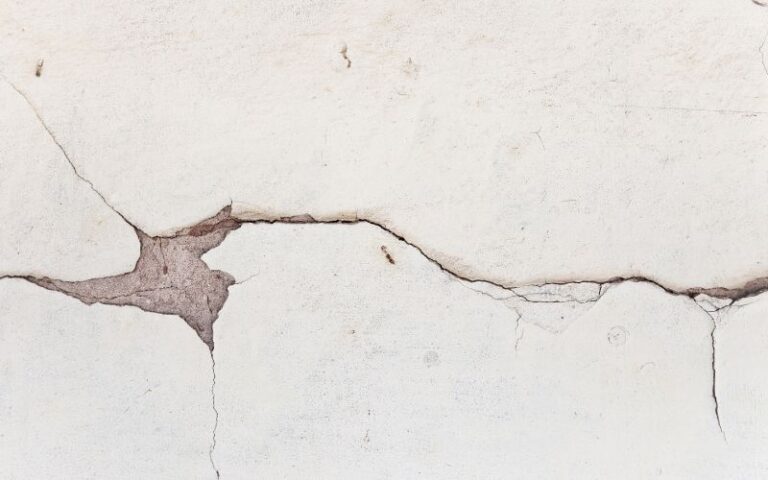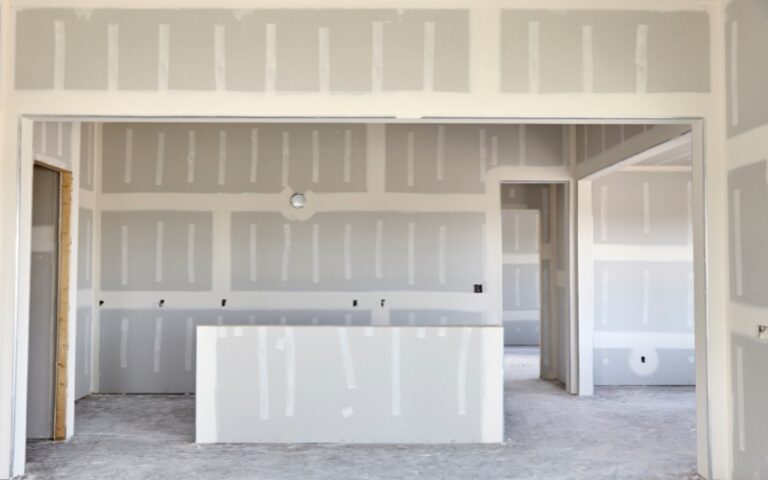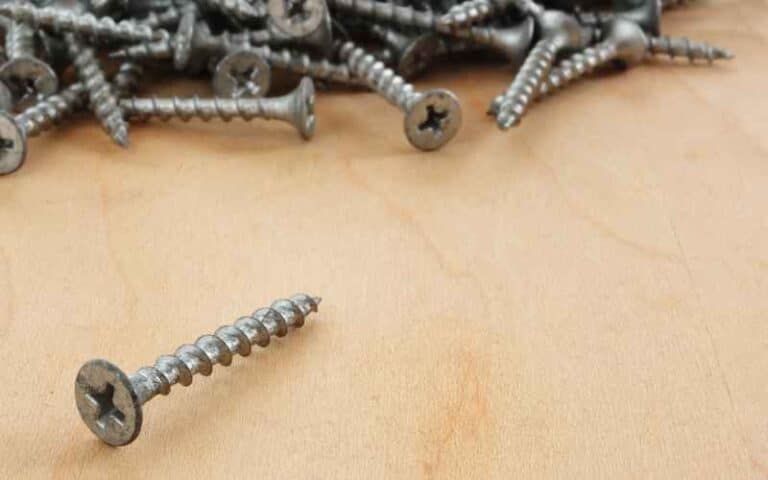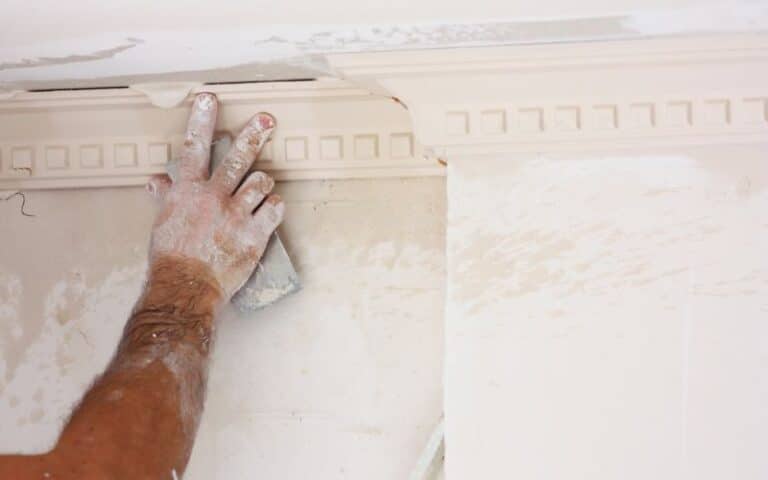Homeowners are becoming more conscious of safety issues regarding chimneys. Most homeowners want to put drywall around their chimneys but aren’t sure it will be safe.
Does contact with drywall put your home at risk? This article explains everything you need to know.
Drywall can touch your chimney or fireplace, but you have to use adhesive gum or screws or both when putting drywall around your fireplace or to cover your fireplace with drywall. This way, your drywall stays properly to the masonry. Although drywall is combustible, drywall touching a chimney does not increase combustion risk.
Drywall can be combustible, which presents safety hazards, so it is important to ensure drywall is safe around your chimney and whether you can put drywall over it.
Ready for a Drywall Quiz?
Can You Drywall Over a Chimney?
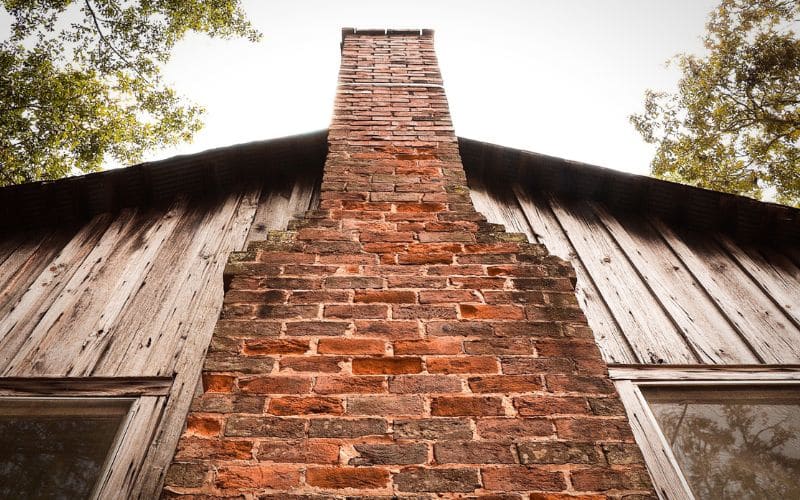
You can cover your chimney with drywall, using either drywall adhesive or screws to drywall over your chimney.
However, it’s better to use both so that the screws can hold the drywall in place while the adhesive is.
The purpose of using glue, nails, screws, or both is to ensure the drywall is properly secured to the masonry so that it does not fall off or slide down.
However, if you want to drywall over your chimney, there are some factors that you have to take into consideration.
Before drywalling over a chimney, you have to first seal the chimney. Otherwise, there will be a high risk of water, leaves, and pests trapped inside the space.
In addition, there are other drawbacks to covering your chimney with drywall, such as the decrease in value, the risk of damage from water, and giving the room an awkward shape.
Does Drywall Over a Chimney Affect a Room’s Insulation?
Drywall over the chimney will not seriously affect a room’s insulation. All building materials have some level of R-value or heat flow resistance. But some more than others.
Drywall has an R-value of about R-0.5 with every half-inch thickness. So, although drywall is suitable for interior walls, and you can cover a chimney with it, it is not primarily for insulation, so it will significantly impact the heat flow transfer in a room.
Covering your fireplace with a thin piece of cardboard or paper will draw warm air up the chimney.
And since drywall is slightly thicker than paper, it will not affect the room’s insulation if you place drywall over the chimney.
Covering your chimney with drywall will not increase heat loss or make the room warmer or cooler; drywall is very light, almost like paper, so heat can escape.
If you’re trying to reduce heat loss or insulate the room so you can use it in the future, there are other options.
#1. Insulate the Chimney from the Inside
For this, you can use Rockwool to create plugs of insulation. Then, you can express it and put it in the opening, and it will expand and fill up the hole.
When you do this, use some galvanized sheet metal from the top of the chimney to cover the opening so that water does not enter.
Finally, plug the opening at the bottom with insulation so there will be no air leakage.
#2. Insulate the Chimney From the Outside
You can use a layer of insulation to cover the entire stack of bricks. Rockwool or expanded polystyrene is best; top it up with half an inch of thick plywood.
You can then cover or paint the plywood to match up with the rest of the room.
In addition, you can also reduce heat loss by pouring insulation such as Polystyrene beads, vermiculite, LECA, perlite, or similar materials through the air brick in the attic.
This help reduces thermal losses up the chimney, and removing them is also very easy. However, do not use polystyrene beads if you’re still using adjacent flue.
Additionally, if you close off the fire opening, the insulation will remain on the slab. And the methods above work best for redundant and disused chimneys.
How Much Clearance Does a Drywall Chimney Need?
To maintain safety, all combustible materials like walls and ceilings must be distant from stovepipes, fireplaces, and chimney connectors.
Chimneys and single-wall stove pipes need to have a 6” clearance from all combustible ceilings and walls, according to the NFPA.
Clearance is the distance authorities consider safe between a heat-producing appliance such as a chimney, chimney liner, vent connector, vent pipe, and other hot surfaces.
The national fire protection association has decided that the clearance between fireplace openings and combustible mantels should be at least six inches.
However, placing exposed combustible mantels and trims directly on the masonry fireplace is safe if not placed within 6″ of a fireplace opening.
When installing a fireplace, it is imperative to adhere to the proper clearance for combustibles. If you place a combustible close to the fireplace, it could lead to a fire.
So, in installing fireplaces, contractors must adhere to the clearances to avoid chemical decomposition caused by heat from the chimney; the process is called pyrolysis.
Generally, the following situations can lead to pyrolysis.
- When a combustible material such as drywall is close to a heat source such as a fireplace or a chimney.
- The airflow between the combustible material and the heat source or masonry is limited.
- Exposing wood to very high temperatures over a prolonged period.
- When the heat produced from the heat source exceeds 200 degrees F.
Thus, in addition to the 6” clearance between the opening of the firebox and for every 1.8 inches of protruding drywall, there must be an additional one inch of clearance.
Also, do not install drywall within two inches of the outer face of the exterior fireplace. Furthermore, Type-B vents also have clearance for safety purposes.
Type-B vents are double-walled metal chimneys and flues; contractors only use them for listed draft-hood-equipped gas appliances.
Finally, it’s important to check your manufacturer’s guide for the clearance of your equipment and the building codes to ensure you’re on course.
What Is the Best Way to Fix a Drywall Tape Bubble When It Is Near a Chimney?
When dealing with a drywall tape bubble near a chimney, a drywall tape bubble fix guide comes in handy. Firstly, scrape off the loose tape and clean the area. Apply a thin layer of joint compound and embed a new piece of tape. Feather out the edges, sand, and repeat if needed.
What Is the Code for Drywalling a Chimney?
The code for drywalling a chimney is R1001.15 chimney clearance. The code provides the safe installation of drywall or Sheetrock around chimneys.
Any portion of a masonry chimney in a building’s interior or within the exterior wall must have a minimum air space clearance to combustibles of two inches (51mm).
Chimneys located entirely outside of the exterior walls of the building, including chimneys that pass through the cornice or soffit, shall have a minimum air space clearance of one inch.
According to the code, the air space must not be filled except to make provision for fire blocking per section R1001.15 of the code.
However, the code has a few exceptions.
#1. Masonry Chimneys Equipped With Chimney Lining
Masonry chimneys with a chimney lining system listed for use in chimneys with combustibles, according to UL 1777, can have combustibles in contact with their exteriors.
But, they must be installed according to the manufacturer’s specifications.
#2. Masonry Chimneys That Are Part of Concrete Walls
Suppose the contractor makes the masonry chimneys part of concrete or masonry walls.
The masonry or concrete wall shall not be in contact with combustible materials less than 12 inches from the inner surface of the closest flue lining.
However, the codes may vary in different cities or regions. So, checking your area codes before you start construction or repair is always prudent.
The table below contains the codes for various masonry fireplaces and chimneys.
| Code | Location |
|---|---|
| R1001.5 | Firebox walls |
| R1001.5.1 | Steel fireplace units |
| R1001.6 | Firebox dimensions |
FAQs
Can You Cover a Fireplace With Drywall?
You can cover a fireplace with drywall and use either screws, adhesive glue, or both to make it more secure.
How Close Can Drywall be to a Chimney?
According to the NFPA, there must be a 6” clearance from drywall to a chimney to ensure safety.
Is Drywall a Combustible Material?
Under the mechanical subcode, Sheetrock, drywall, and gypsum are all considered combustible materials.



